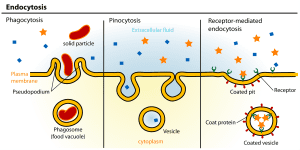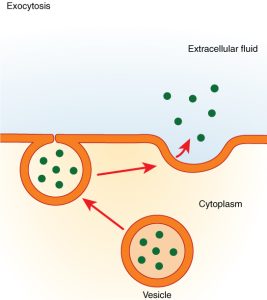Comprehensive Guide to Membrane Transport
Membrane Transport Simplified: Understanding How Substances Move In and Out of Cells
The plasma membrane plays a crucial role in maintaining the balance between the internal environment of a cell and its surroundings. This balance is achieved by regulating what goes in and out of the cell through various modes of transport. Each type of transport mechanism involves different requirements, and some need energy to function, while others do not.
Let’s dive deeper into the various modes of membrane transport and learn how substances cross the plasma membrane effectively.
Different Modes of Membrane Transport
Simple Diffusion: The Passive Pathway
Simple diffusion is the passive movement of substances from an area of higher concentration to one of lower concentration. It doesn’t require energy and allows substances to move down their concentration gradient until equilibrium is reached. Think of it as being in a crowded room—if the door is open, it’s natural for you to move toward the less crowded space outside. This is the basic concept of simple diffusion, and it’s often called passive transport because it doesn’t use any energy from the cell.
Simple diffusion is essential for maintaining homeostasis. For instance, gases like carbon dioxide and oxygen rely on simple diffusion to enter and exit the cell efficiently.

Facilitated Diffusion: When Proteins Play a Role
Like simple diffusion, facilitated diffusion is also a passive movement of substances, where molecules move from an area of higher concentration to an area of lower concentration. The difference? Facilitated diffusion requires the help of transport proteins that span across the membrane. This is necessary for small polar molecules that cannot diffuse through the lipid bilayer without help.
Water, although small and polar, requires a special protein called aquaporins to pass through the membrane in larger quantities, which is a process known as osmosis.

Active Transport: Moving Against the Gradient
Active transport, unlike passive transport, requires energy in the form of ATP to transport molecules against their concentration gradient. Imagine being in a crowded room and instead of leaving for a less crowded space, you’re trying to push your way back into that crowded room—that takes effort, and that’s active transport!
Due to the selective permeability of the membrane, cells can form concentration gradients, and active transport is often needed to maintain these gradients. Additionally, active transport is also used for moving large or bulky molecules or transporting large quantities of small molecules. These processes are known as endocytosis and exocytosis.
Endocytosis and Its Types
Endocytosis is when a cell takes in substances by engulfing them with its membrane. There are three main types of endocytosis:
Phagocytosis: The cell engulfs large molecules or particles, often resulting in the formation of food vacuoles. Think of it as the cell eating.
Pinocytosis: In this process, the cell “gulps” surrounding solutes into small vesicles covered in a layer of protein—much like drinking.
Receptor-Mediated Endocytosis: A receptor on the cell surface binds with specific molecules outside the cell, and upon binding, the plasma membrane forms a vesicle, bringing those bound molecules into the cell.
Exocytosis: Secretion at Its Best
In contrast to endocytosis, exocytosis is the process where molecules are secreted from the cell. In this case, a transport vesicle from the Golgi apparatus travels along the microtubules within the cell until it reaches the plasma membrane. The vesicle fuses with the plasma membrane, releasing its contents to the outside of the cell.
Visual Representation of Membrane Transport
Key Terms to Know
Active Transport: Movement of substances against their concentration gradient, requiring ATP.
ATP (Adenosine Triphosphate): The energy molecule used in active transport.
Endocytosis: The process of taking substances into the cell.
Exocytosis: The process of releasing substances from the cell.
Facilitated Diffusion: Passive transport that requires a protein to help substances cross the membrane.
Osmosis: The movement of water across a membrane.
Transport Proteins: Proteins that help move substances across the cell membrane.
Understanding the Importance of Membrane Transport
Understanding membrane transport is crucial because it directly influences cellular health and function. It allows cells to import essential nutrients, export waste products, and maintain internal stability. The coordination between active and passive transport ensures that cells continue functioning optimally, balancing both their internal and external environments.
Conclusion
The various forms of membrane transport play essential roles in keeping cells alive and functioning effectively. From passive diffusion to energy-intensive active transport, each mechanism has a specific role in cellular processes. By understanding these processes, we can better appreciate the intricate workings of our cells.
Dive Deeper:
Want to learn more about membrane transport and how it impacts cellular biology? Check out our AP Biology Unit 2 replays and catch up on the 2021 Unit 2 Cram sessions for detailed explanations and illustrations.







